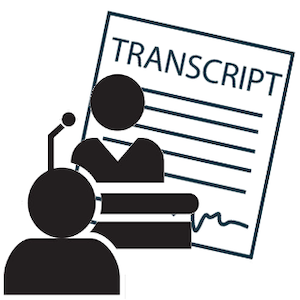By Dr. Ken Broda Bahm:

Here’s an intuitive belief that many who work in the field of law might adhere to: More information leads to better decisions. Those who work in the social sciences, however, know that this does not always hold true. Based on the higher “cognitive load,” higher levels of information can also mean that the recipients of that information will try to simplify, rely on “heuristic” short-cuts, or decide based on information with less actual relevance.
One recent study on eyewitness testimony provides a timely example of that. Two psychologists from University of California, Riverside (Hicks & Clark, 2020) looked at the mode of presenting testimony from an eyewitness to a crime. Specifically, they looked at four conditions for that testimony – audio/video, audio only, transcript, and summary. In each mode, they also compared testimony with either good or poor witnessing conditions (e.g., the amount of lighting, or the amount of time seeing the perpetrator’s face). When the visibility conditions are poor, that should lead to less confidence and fewer convictions. And it did, but not uniformly across the modes. The more information-rich the presentation was (video and audio rather than just transcript), the less sensitive the jurors were to the conditions of poor witness visibility. The least sensitivity occurred with full audio/video witness presentation, with the other conditions with increasing sensitivity in audio only, transcript, and summary. And the effect wasn’t small: “When the witnessing conditions were relatively poor, the proportions of guilty verdicts were twice as high for a video or audiovisual presentation compared to a written transcript or summary.”
Why Does More Information Result in Worse Decisions?
This research result is likely familiar to social scientists, but may be confusing to others. After all, given that the substance of the testimony is the same, why should an audio/video presentation lead to less attention to the substantive problems in that testimony? The simple answer is that because there is more to consider, attention to details may be watered down. The authors summarize, “Results and theory together suggest that when jurors give weight to less useful visual and paralinguistic information, their assessments of accuracy and guilt may be less reflective of the witnessing conditions described by the witness.” In other words, when they are looking at gesture, facial expression, and attending to speech rate, emphasis, pitch and dozens of other qualities, then the facts about the witness’s visibility conditions amount to just one piece of data among many. When they are reading the testimony, in contrast, there are fewer things to consider.
Live Versus Recorded or Streamed Testimony?
This particular study did not include a live testimony condition, but we would expect the same logic to apply. With the changes that the pandemic has brought, we expect that many are studying the difference between live testimony and either live-streamed or video-recorded testimony. While both include many of the same audio-visual components, it is to be expected that live communication carries more information and is more involving of a viewer’s attention. Think of it as the difference between watching a movie and seeing a play, where the director is choosing where you look, how closely, and for how long, versus watching a play, where your eyes are free to roam. A version of that applies in the courtroom as well. When a witness testifies live, jurors see the whole person, and not just a box around their face. They might see them come in to the courtroom, talk to counsel, and step up to the stand. Many see this as a reason why live testimony is presumptively better, but not necessarily. The live witness carries a richer information environment, but jurors might also be drawn to factors that are not necessarily relevant to the task.
What About Transcripts?
Litigators generally don’t like to use transcripts because jurors can be bored just listening to read testimony. But the assumption that the testimony carries less impact may not always be warranted. It may depend on what kind of impact you are after. If the key contribution of the testimony boils down to a few key facts, then jurors might attend better to those facts based on the transcript, with the extraneous factors of presentation stripped away.
Also, when testing your case in a mock trial, we will often use summaries or quotes from testimony instead of playing the recording of the witness. Often, that choice is made for the purpose of saving time and streamlining the process. However, depending on the nature of the testimony, the summarized or quoted testimony may make it easier for mock jurors to be more sensitive to key facts by making those facts really the only thing they’re getting from a given witness. Like many communication factors, it depends on your purpose. But more information isn’t always better.
______________

Thanks for reading. I am a litigation consultant (bio here) specializing in mock trial research, witness preparation, jury selection, and case strategy, generally (but not always) in high-value civil cases. If you have a comment, a request for a future topic, or a concern about a current area of litigation, or a question about your own case, contact me now.
Other Posts on Testimony:
- Prepare Your Witness Virtually: Seven Best Practices
- Witnesses: Answer Both the Language of the Question and Its Implication
- Adapt to Remote Communication (Including Testimony)
Hicks, J. M., & Clark, S. E. (2021). Persuasiveness and sensitivity to witnessing conditions depend on how testimony is presented. Applied Cognitive Psychology, 35(1), 52-61.